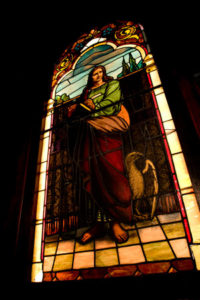This understanding of the vocation and mission of a Christian university is a consequence of what the Scriptures teach about God and his purposes for the creation. The Christian belief in one true Creator God, whose act of creation leaves nothing outside the results of his initiative in speaking the worlds into being, demands a worldview that is comprehensive, orderly, curious, and humble. The creation of human beings, male and female, as uniquely formed in the image of God and given a delegated responsibility to care for and manage his creation demands a submissiveness of mind and heart that engenders an intellectual humility—a truth-seeking pursuit of coherence that promotes just and loving communities of work and worship. The reality of the Fall and its consequent pervasive effects of human alienation and brokenness reinforces the need for humility and honesty in all matters of faith, thought, and learning.
A Christian worldview is a way of looking at reality in all the ways we categorize it, whether visible or invisible, and according to all the disciplines of learning known or yet to be defined. Such a worldview of necessity draws upon the central sources of Christian faith and tradition for normative guidance. Nearly every Christian tradition relies upon and appeals to the Christian Scriptures (with some variation as to the books that should be counted as authoritative) as the foundational point of departure for Christian thinking and living. Christians differ as to the interpretation of the Scriptures, though the church throughout its long history has generated bodies of theological knowledge and tradition that, though subject to review and reformation, at the most basic levels have gained general consensus and attained their own authority over time.



